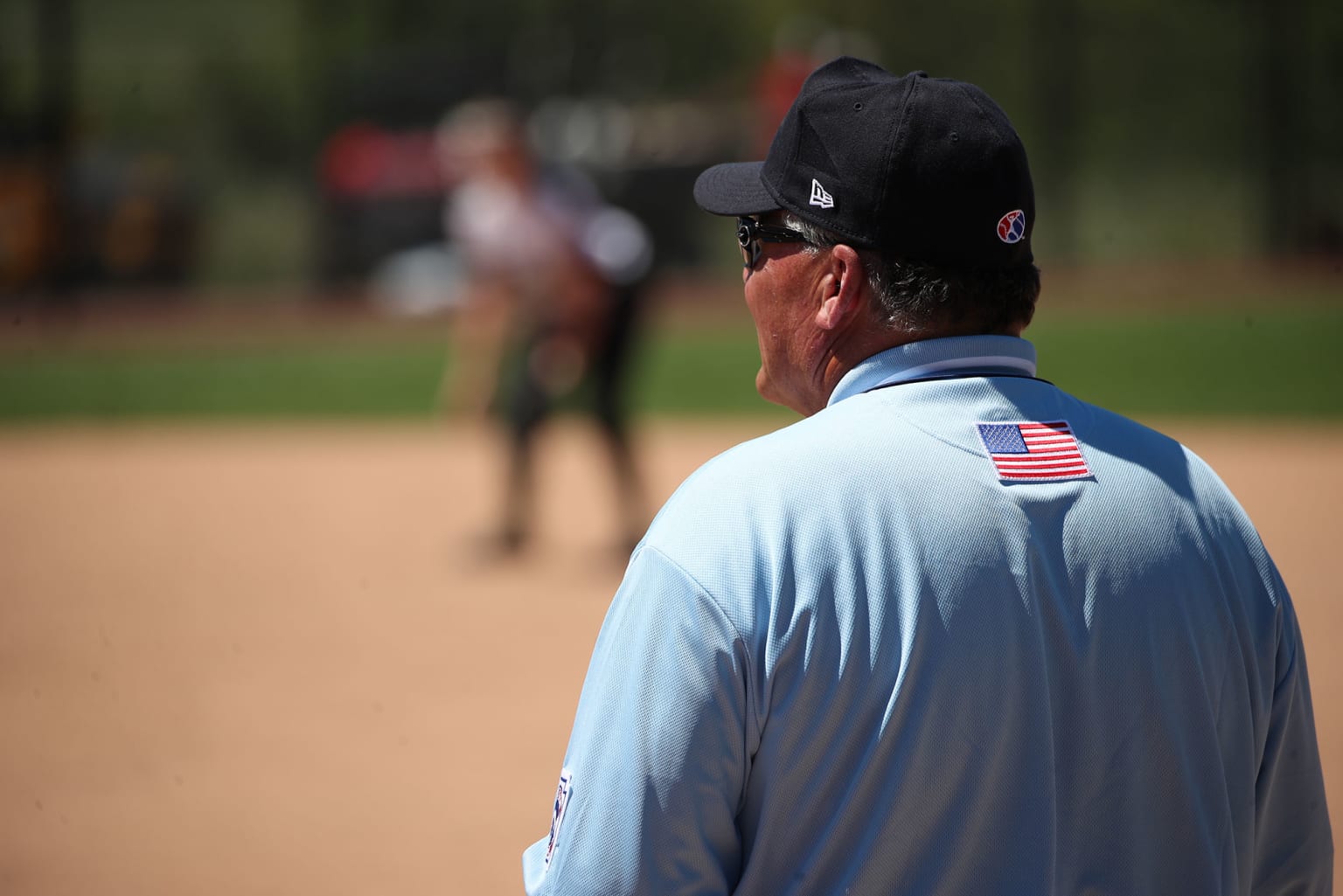
This month, we will explain and outline an umpire’s parameters to rule on the unsportsmanlike conduct of stealing signs that results in the disqualification of a player, coach, manager, or substitute. The situation described below is contingent on the home plate umpire discussing the penalty for unsportsmanlike conduct with both managers during the pregame plate meeting; and is applicable in all divisions of Little League Baseball® and Little League Softball®.
Situation
In the bottom of the fourth inning in a Little League Softball® Major Division game, with runners on first base and second base, and the four-hole batter in the batter’s box, the base umpire is convinced that the base runner on second is obviously moving her hands from hips to her knees on drop balls signaled by the catcher. The base umpire determines this pattern of movement has been blatant and consistent for previous runners on second base, and before the next pitch is thrown, she calls “time.” With play halted, she indicates ejection, and disqualifies the offensive team’s manager and the base runner for unsportsmanlike conduct. The offensive manager argues the decision, and indicates that he wants to protest the ruling. The home plate umpire states that in the judgment of the base umpire, the players was obviously stealing/and relaying signs to batters which is an unsportsmanlike act, and punishable by disqualification.
Explanation
According to the Conditions of Tournament Play, the stealing or relaying of signs to alert the batter of pitch selection and/or location is unsportsmanlike behavior. If, in the judgment of the umpire(s), this behavior is occurring, both the player and the manager may be ejected from the game. It is the discretion of the umpire to decide if the action is blatant and consistent to the point where ejection is warranted.
An ejection for unsportsmanlike conduct based on the stealing/relaying signs is a possibility in all levels of Little League. It is the responsibility of the umpire to make the managers aware during the pregame plate conference that if this action is to take place, it would be done in a dead ball situation, and that no in-game warning is required.
The ejection of a player does not equal an out. The offensive team would identify a replacement for the disqualified player before the home plate umpire puts the ball back into play. The standard penalty for ejection remains in effect – the remainder of the current game and the entirety of the next game.
A manager or coach may not protest unsportsmanlike behavior because no protest shall be considered on a decision involving and umpire’s judgment.
During regular-season play, Rule 4.19 – Protesting Game – explains the circumstances whereby a team manager may lodge a protest that requires resolution before the game may continue.